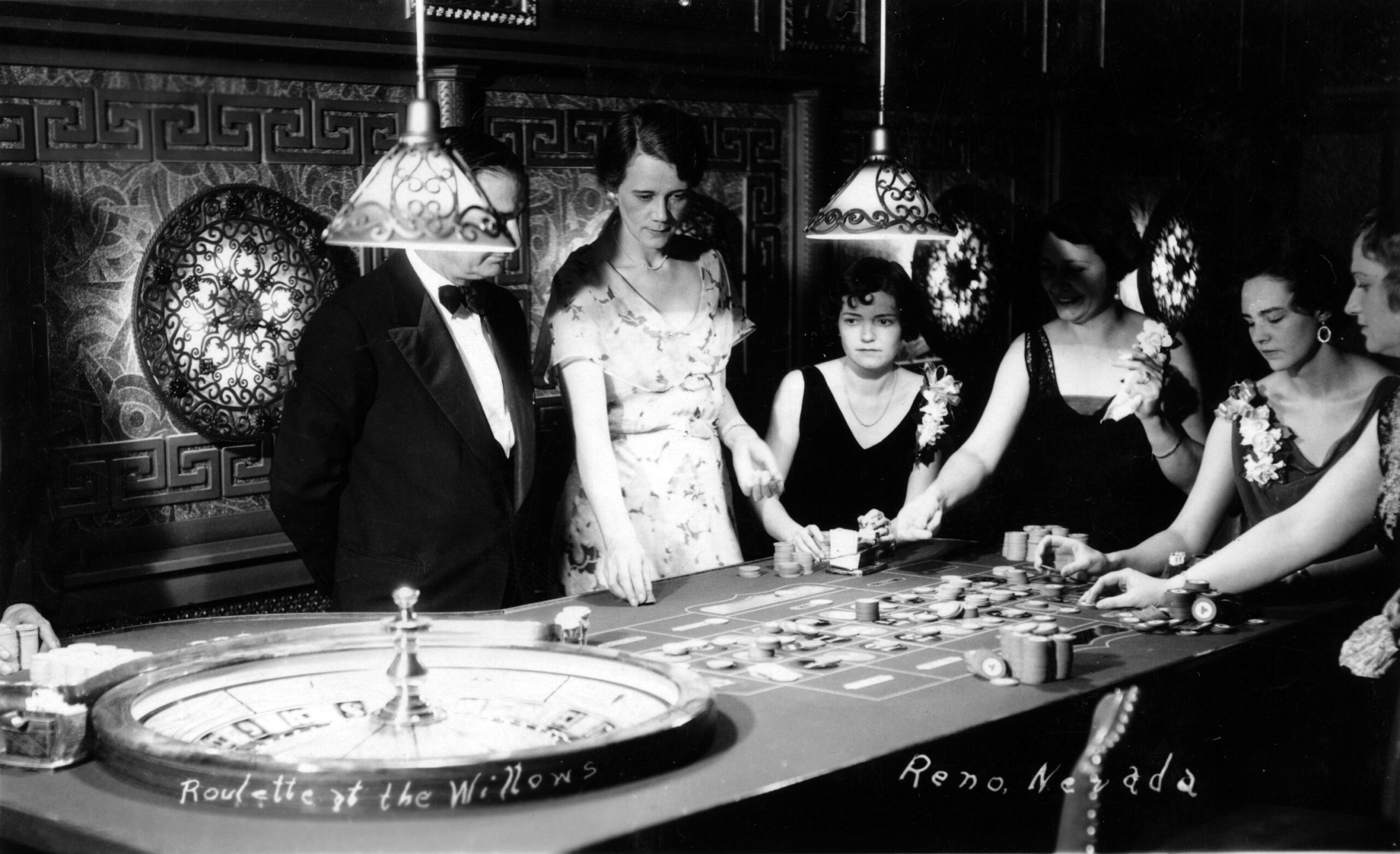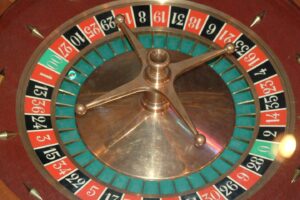American Gaming Archives – AGA
American Gaming Archives – AGA
History about Archives
The NHS began the American Gaming Archive (AGA) in 2006 to be the most comprehensive archive of gambling artifacts produced for gaming establishments (legal and illegal) across the U.S. that include manuscripts, library materials, and photographic material that document the history and practices of gambling in the United States and the Caribbean.
The NHS secured one of the largest collections of gaming artifacts and original documentation manuscript material in the United States in 2006 and we are actively expanding the collection. The AGA collection has approximately 600 linear feet of library, manuscript and photographic material, and over 40,000 objects. The intent of this collection is to create an in-depth historical research archive for future students, historians, the general public, and government agencies.
Prior to 1931 (legalization of gambling in Nevada), gambling in its most unabridged forms was illegal throughout America. Its artifacts were considered evidence of illegal activity and were confiscated and destroyed. Any consideration of establishing a national archive and artifact collection dedicated to gaming has to overcome the problems that years of prejudice against gaming have inflicted on its records and artifacts.
America’s gambling “industry” began in a thousand small back rooms, but today its influence can be seen all over the country and around the world. Despite its size and influence, gaming has not previously had a single national institution that focused on its history and preserved its documents and artifacts. The AGA has established a framework upon which to build a coordinated and integrated historical gambling archive with the Nevada Historical Society as the core institution.

Roulette at the Willows, Reno, Nevada, 1930s.
Mission Statement and Project Outline
The Initiation of the Project – 2006
In November of 2006, the American Gaming Archives was initiated with the donation of the Paul-son Dice and Card Company’s Las Vegas building sign. Shortly after the AGA project was initiated, the Nevada Historical Society received a donation of items from David Sarles of New York of manuscript and artifacts from the liquidation of Hunt & Co. and Taylor & Co. in Chicago. These two companies were two of the three surviving major gaming manufacturers in the Chicago area, long the traditional of seat of gambling manufacturing in America. Their records and artifacts covered a broad area of America, though primarily in the Midwest, but truly nationwide due to the extent of their customer base being from all 50 states and having operated from the early teens (Hunt & Co.) through prohibition and the World War II years with their peak in the 1950’s. The material received, documented American and Caribbean gambling from an insider’s perspective of the suppliers who sent gambling paraphernalia to gambling operations in every state. These initiating donations have created the core of the AGA.
The Project 2007 – 2013
Additional donations to the AGA were received in 2007, 2008 and 2009 included the manufacturer records of Mason & Co. / K.C. Card Co. of Chicago, the largest of the three Chicago manufacturers. Beginning in 2008, the AGA received material from the Burt company of Portland, Maine, the primary manufacturer of gaming chips and checks in the 1950’s and 1960’s. Additional archives donations included original artwork and catalog preparation documents for the H.C. Evans Company of Chicago that had begun gaming manufacturing in the 1920’s. Items from T.R. King, the primary gaming manufacturer of the West Coast, were also added to the collection.
The value of the records of the gambling manufacturers can not be underestimated in their contribution to gambling history. These records document the extent of gambling along with exact dates and gamblers names and order information that clearly profiles gaming operations, legal and “unlicensed”, throughout America. The manufacturers’ record cards on sales, more than 50,000 in number, truly profile the history of gambling in the Western Hemisphere.
In 2010, 2011 and 2012, the AGA received donations of materials that include the unique gaming chip original artwork used for Nevada casinos as well as artwork for gambling chips wherever American style gambling was being played. Along with the artwork, are the original manufacturing molding plates used to make gaming chips including the blueprints of the plate designs. At the end of 2012, the Burt Company was sold, and Arthur Girard and James Blanchard donated an original 4,000 plus pound molding press that was used at the Burt Company since the 1920’s. Because the manufacturing of casino chips was a high security operation, and because some of the Burt Company customers were well known gamblers and crime figures, the company’s operations were conducted with the utmost secrecy. The company’s manufacturing records were donated to the AGA in 2012 and constitute some of the most valuable records of gaming history along with the Chicago manufacturers’ company records.
At the present time, the AGA’s gambling archives at the Nevada Historical Society represent the single most concentrated group of American gambling history documents and artifacts in the nation. They include the documentation, not only of operations throughout America, but also include manufacturers records on “special” or gaff manufacturing processes that include marking cards and loading dice. Many of the gaff gambling games of the 1930’s and 1940’s are fully documented, including operation instructions.
Advancing the Project – 2014
Gathering – The artifacts and manuscript materials that best document and characterize each of the categories of the Archives Outline areas will continue to be sought and acquired for the archives. Primary collections will be housed in the Nevada Historical Society in Reno, Nevada. In instances where the artifacts or manuscript materials are secured in other institutions, but their inclusion in the overall concept of the Archives is advantageous, copies or permission for electronic reproduction will be requested from those institutions. An example of this might be the inclusion of photographic material relating to gambling clubs in areas such as Kentucky that would compliment the core manufacturers’ collections in Nevada that reflects artifacts produced for gambling in Kentucky’s “Unlicensed” clubs. The AGA collection records from manufacturers reflect gambling world-wide.
Securing – The artifacts and manuscript material will be housed in a secure facility. In the case of information that might be considered as damaging to the gaming industry, limited access preservation will be maintained.
Preserving – The artifacts and manuscript material will be stored in a form and fashion that best preserves their sub-stance and character for posterity. In the case of objects that might deteriorate over time, a reasonable attempt will be made to preserve their essence. An example of this might be dice made of unstabilized cellulose nitrate. In this specific case documenta-tion of the item will be maintained in photographic form. Manuscript material will, when possible, be de-acidified and stored in acid free protectors.
Presenting – The intent of the collection is to preserve for posterity the history of American gaming and to encourage its study and understanding. Access, as determined by the policy of the institutions, is a necessary consideration of the archives. With the continuing expansion of information distribution systems such as the internet, the archives are intended to present its essence as fully as possible without jeopardizing the integrity of its collections or debasing their historical value. Displays of the actual artifacts and manuscript material is encouraged, as affordable by the institutions. The development of a traveling exhibit would be a strong consideration for the archives to extend the public reach of its collections. Although it is probably not well known, American gamblers operated throughout the nation and a traveling exhibit could enhance historical understanding in the other forty-nine states in which gambling was illegal but practiced! The archives would encourage the sharing of its information with sister institutions in those instances that would advance knowledge and understanding of its purpose. The archives would also encourage the use of its artifacts and manuscripts in scholarly research endeavors.
Coordination – The Archives are intended to become the property of the securing institutions. The donors and coordinator of the Archives project will work with the securing institution to facilitate their creation and preservation. It is the intent of the donors and coordinator to create the best and most definitive resource for American gaming history in the world at Nevada’s Oldest Cultural Institution.

French Roulette Wheel, Fitzgerald’s Hoard.
Did you know?
We are seeking additional funding to continue the preservation and presentation of the AGA material in our public museum. Our museum displays are designed to give a general overview of the specific subject, but the real importance of the AGA lies in the depth of information that the collection supplies for historical research.
We are actively collecting historical documentation, photographs, and objects to enhance our gambling collection.
Interviews, Programs and Articles
C-SPAN’s Local Content Vehicles (LCVs) made a stop in their “2019 LCV Cities Tour” in Reno, Nevada, from April 6-12, 2019, to feature the history and literary life of the community. Working with the Charter cable local affiliate, they visited literary and historic sites where local historians, authors, and civic leaders were interviewed. The history segments air on American History TV (AHTV) on C-SPAN3 and the literary events/non-fiction author segments air on Book TV on C-SPAN2. Our AGA Gaming Curator, Howard Herz discusses the history of gaming.
Lady Jessie Jessie began working as a roulette dealer at Harolds Club in the late 1930s, married Fred Beck, who operated keno at Harolds, and in 1971, she purchased the Riverside Hotel and Casino which she owned until 1978. Jessie was a huge supporter of the Navy and would spend thousands of hours and dollars doing favors for servicemen in Vietnam and all over the world. In 2019, PBS Sacramento produced a documentary called “Lady Jessie, A Vietnam Story.” Host Neal Cobb and Jessie’s grandson, CJ Risley, will introduce the documentary.
Tokens of History 2018 AGA Article by Jeri Chadwell, Reno News & Review
AGA Chip Dig 2015 AGA Article by Guy Clifton, RGJ